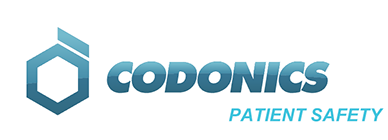
RFID use continues to expand in healthcare. How do you see it helping to improve patient safety and clinician efficiency?
Beth:
The safety benefits of automating manual processes have been well-proven by pharmacy automation vendors. However, the time to scan every unit of use with traditional barcode-based systems can be a barrier to adoption. Scan compliance can be especially challenging in areas like the operating room, leading to constant cycle counting, inaccurate expiration date tracking and frequent stockouts. By combining RFID with traditional automation, like dispensing cabinets, pharmacy staff can quickly assess inventory and mitigate these long-standing challenges without trying to change clinician behavior. But, improving medication access and availability goes far beyond immediate dispensing needs of hospital clinicians. Enhanced visibility of inventory enables buyers to make more informed purchasing decisions. And when buyer behavior is stabilized, it enables wholesalers and manufacturers to conduct more reliable demand planning. The teams at Cencora see RFID as an enabler of supply chain stability, helping to minimize disruptions for patients in need.
What do you see as the current challenges in the adoption of RFID in healthcare?
Beth:
At a time when pharmacies are challenged with staff shortages, the case for automation is stronger than ever. However, RFID inventory management systems have historically been heavily reliant on manual tag application by pharmacy staff. With 9 out of 10 pharmacists being asked to do technician-level work(1), all that manual tagging can upend the return on investment for RFID technology. The more products that providers can order pre-tagged, the more feasible it becomes to expand into additional use cases beyond crash cart and operating room inventory management. As availability of RFID-enabled product improves, automation vendors have a stronger case to reimagine their barcode-driven systems, such as traditional carousels and robots. However, to make this new technology widely accessible, RFID market players will have to commit to interoperability.
—
Sources:
1. ASHP’s Survey Shed Light on Pharmacy Technician Shortage. Accessed online on May 9, 2023.
Where do you see the future of RFID in healthcare?
Beth:
Adoption of RFID in healthcare has been primarily centered inside the walls of a hospital. However, the same inventory management challenges we see in hospital crash carts are experienced by providers across sites of care — from standalone emergency departments to clinics, to long-term care facilities. As care gets further from the hospital and closer to home, new inventory management challenges will arise, and providers will need to reimagine how they ensure medication availability. RFID will play an important role in this evolving medication supply chain.
As a Vice President of Global Products and Solutions at Cencora, Beth Riggio is a healthcare product innovator, marketer and business leader bringing people together in the relentless pursuit of what’s next. She is a driver and a pacesetter who excels at developing high-performing teams to uncover fresh perspectives in go-to-market strategy.
